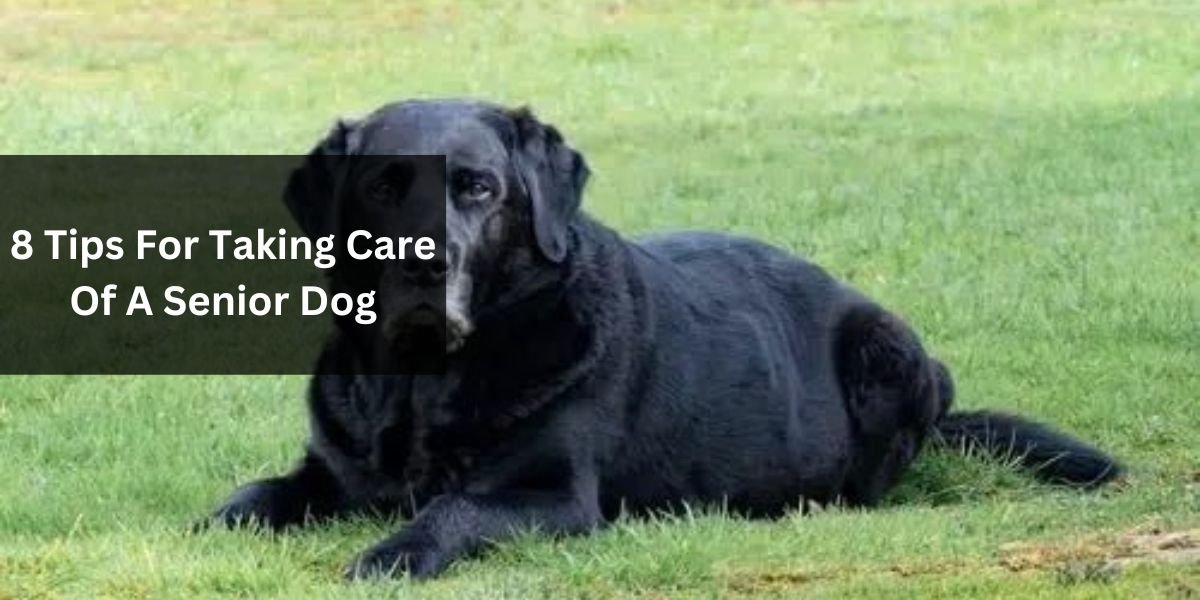As our loyal companions age gracefully, their needs evolve, requiring a shift in our caregiving approach. Taking care of a senior dog is not just about meeting their basic needs but ensuring their golden years are filled with comfort, love, and tailored care. In this article, we’ll explore eight tips to help you navigate the journey of caring for your aging canine friend.
1. Understanding the Aging Process
Just like us, dogs experience physical and mental changes as they age. Knowing what to expect can empower you to provide the best care possible. Keep an eye out for common signs of aging, such as decreased energy, changes in coat quality, or altered sleeping patterns.
2. Balanced Nutrition for Optimal Health
A crucial aspect of senior dog care is maintaining a well-balanced diet. Consider switching to a senior-specific dog food formula to address their changing nutritional requirements. Consult with your veterinarian to tailor the diet to your dog’s specific health needs, such as managing weight or addressing joint issues.
3. Regular Veterinary Check-Ups
Frequent veterinary check-ups become even more vital as your dog ages. Regular screenings can help detect and address potential health issues early on, ensuring a higher quality of life for your furry friend. Discuss with your vet about establishing a senior wellness program tailored to your dog’s individual needs.
4. Exercise and Mental Stimulation
While senior dogs may not have the same energy levels as their younger counterparts, they still benefit greatly from regular exercise and mental stimulation. Adjust the intensity and duration of activities to accommodate their changing abilities. Consider introducing puzzle toys to keep their minds sharp and engaged.
5. Comfortable Living Environment
Create a cozy and comfortable space for your senior dog to relax and rest. Invest in a supportive bed, especially if they suffer from arthritis or joint pain. Provide easy access to water and keep their living environment warm, as older dogs can be more sensitive to temperature changes.
6. Dental Care for Senior Dogs
Dental health is often overlooked but is crucial in senior dog care. Dental issues can lead to pain and discomfort, affecting their overall well-being. Implement a regular dental care routine, including toothbrushing and dental treats, to maintain healthy teeth and gums.
7. Monitoring Weight and Managing Obesity
As dogs age, their metabolism slows down, making them more prone to weight gain. Obesity in senior dogs can exacerbate health issues such as arthritis and heart conditions. Keep a close eye on their weight and adjust their diet and exercise accordingly to maintain a healthy body condition.
8. Adaptation of Daily Routine
Flexibility is key when caring for a senior dog. Adjust your daily routine to accommodate their changing needs. Be patient with any physical limitations they may develop, and provide the extra love and attention they deserve.
Conclusion:
Caring for a senior dog is a journey filled with compassion, understanding, and adaptation. By embracing these eight tips, you can ensure your furry friend’s golden years are filled with joy, comfort, and well-deserved care. Remember, every senior dog is unique, so tailoring your approach to their individual needs will make all the difference.
FAQs:
Q1: How often should I take my senior dog to the vet?
A1: Regular veterinary check-ups are crucial. Aim for at least twice a year, or as advised by your veterinarian based on your dog’s health status.
Q2: Can I continue the same exercise routine for my senior dog?
A2: Adjust the intensity and duration of exercises to match your dog’s abilities. Consult with your vet to create a suitable exercise plan.
Q3: What signs indicate dental issues in senior dogs?
A3: Look out for bad breath, excessive drooling, difficulty eating, or pawing at the mouth. If you notice any of these signs, consult your vet promptly.
Q4: How can I create a comfortable living environment for my senior dog?
A4: Provide a cozy bed, keep the living space warm, and ensure easy access to water. Consider ramps or steps if your dog struggles with mobility.
